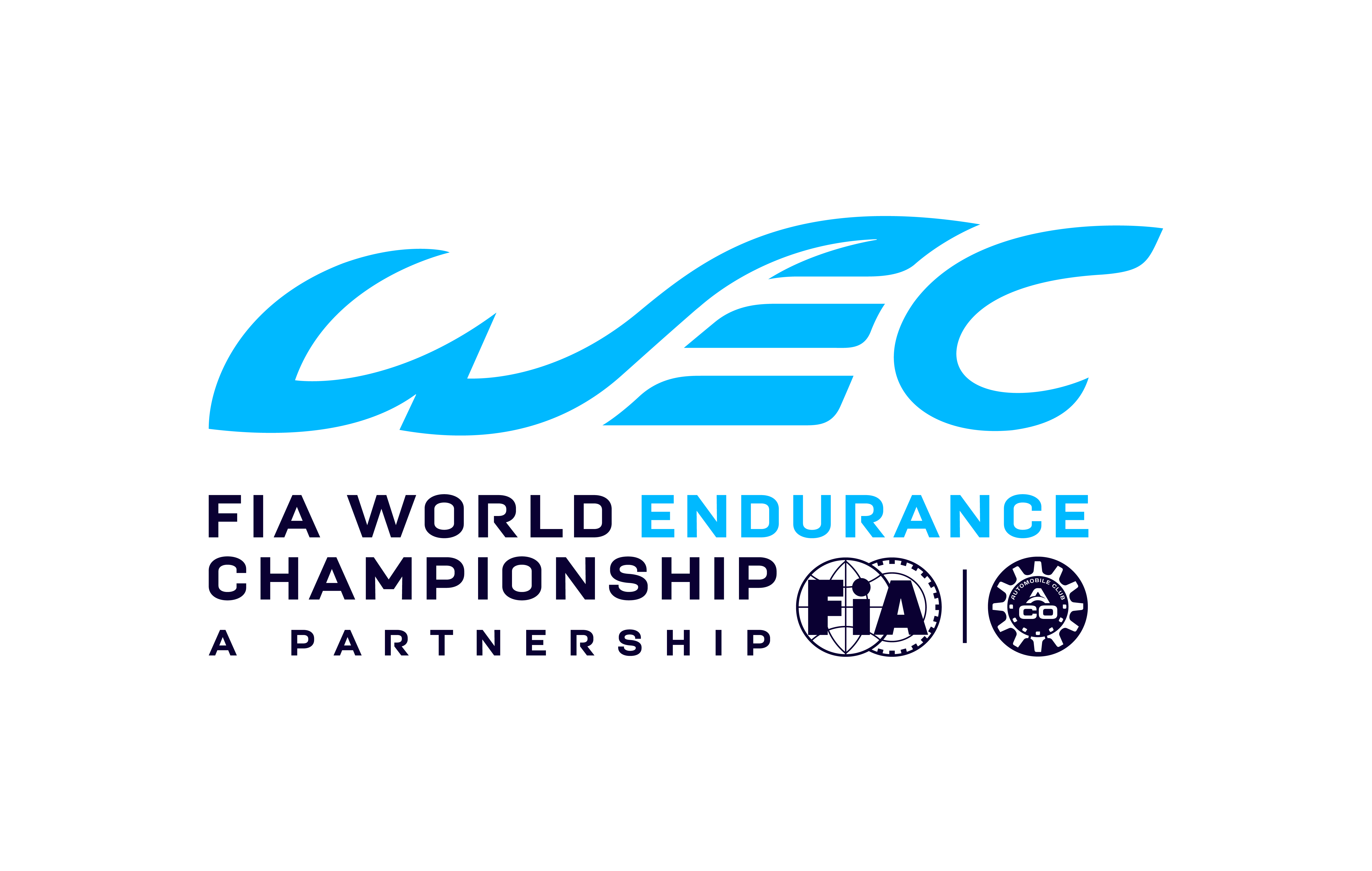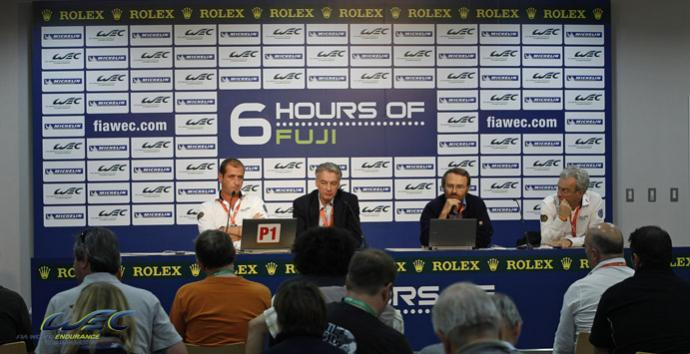

During the 6 Hours of Fuji weekend at Fuji International Speedway Vincent Beaumesnil, Sport Director of the ACO, Bernard Niclot, the FIA Technical Director, Denis Chevrier, the FIA WEC Technical Delegate and Daniel PERDRIX, the ACO Technical Delegate, made some clarifications on the LMP1 regulations that will be introduced in 2014 and the future vision for the LMP2 and GTE categories.
LMP1 2014
The LMP1 power train main concept is currently based on performance and from 2014 it will based on efficiency and fuel consumption but without affecting the competitiveness of the racing.
2012 power train
– Power restricted by air limitation (restrictor, boost) and engine capacity
– Fuel unlimited
– Hybrid systems limited, contribution on performance, not on fuel consumption
2014 power train
– Power restricted by fuel flow
– No limit in air restrictor, boost pressure and engine capacity
– Instant fuel flow is controlled, not global amount of fuel : no strategy in fuel economy, cars and drivers must go at full performance
– Amount of energy (fuel) adjusted vs Hybrid system power
– All other new technology is potentially eligible under the condition it can be controlled, balanced, and road relevant (ex : electric car, hydrogen, 2 stroke engine)
In 2014 the most efficient power train will be the most competitive. The bigger the hybrid system is, the lower fuel consumption will be.
Protection of LMP1 Privateers
2012
Technical rules are the same for all cars. There is currently no opportunity for privateers to compete with high budget cars built by manufacturers.
2014
A technical rule dedicated to privateers
- No expensive hybrid system
– Amount of energy (fuel) adjusted to be competitive
– Reasonable reduction of weight for accessible performance
Manufacturers and privateers will compete in the same category (LMP1) for overall win of races
– Manufacturers will enter Manufacturer’s FIA World Endurance Championship
– Privateers will enter FIA Endurance Trophy for LMP1 Privateers
LMP1 privateers will be protected by a technical regulation dedicated to them . Performance at a lower cost and lower level of technology

Building on the Success of LMP2
In addition to the new rules for LMP1, the highly successful LMP2 category will be protected and enhanced.
The success of LMP2 cost cap rule
- Cost cap for chassis, engine & engine rebuilds
Ready to race car @ €440,000 / $570,000
- Stability of rules (until end of 2015 minimum) & freezing of cars
- Tyres and engines limitations
- Balanced engines and chassis (new diesel engine in 2013)
The number of LMP2 teams has doubled in just three years and the stability in the rules for a minimum of three years will mean that this category will continue to grow in the future.
Evolution of GT
A new working group has been established to look at the GT category. Manufacturers need proper technical regulations to invest in GT, they require GTE rules. However the GT market is also focused on GT3 cars. This is demonstrated by the fact that a manufacturer sells between 10 to 15 GTE cars per year and they sell between 30 to 150 GT3 cars annually.
ACO and FIA are joining their efforts with the manufacturers to create a working group that will investigate the possibility of a single GT category. The goal is to establish a single GT class that has the technical credibility of GTE at the reduced cost of GT3. This means that each manufacturer only has to develop one car instead of two (GTE and GT3) as is the case now.
The working group will meet in November and the timescale for the establishing of this new class has not been set but there won’t be any changes before 2015 at the earliest.
The full presentation is available as a PDF document in the Fuji Media Guide area of the FIAWEC Media Website
Jeff Carter